Guest introduction
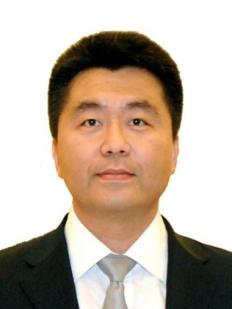
Han Hongbin, Prof. PhD, MD
Professor
Radiology Department, Third Hospital of Peking University
Director
Scientific Research Office
Peking University Health Science Center
Email: hanhongbin@bjmu.edu.cn
Prof. Han received his Doctor Degree of Radiology at Peking University in 1998, and now works as a chief radiologist at the Radiology Department Peking University Third Hospital. He is also the director of both the office of Scientific Research and the office of Discipline Construction, Peking University Health Science Center. Prof. Han established a key laboratory of Magnetic Resonance Imaging (MRI) Equipment and Technique in PKU(Beijing key lab.) of and served as the director since 2010. He is leading a team working on brain Extracellular Space (ECS), which provides an immediate living environment for neural cells and accounts for approximately 20% of the total volume of a living brain. So far, he has developed two in vivo measuring methods which can provide biophysical parameters of ECS and image the interstitial fluid (ISF) drainage in the whole brain. By using the self-developed measuring system, Dr. Han and his team have made a series of discoveries, i.e. brain ISF drains in a compartmentalized ECS system and the diffusion in different ECS divisions are disparate. After verifying the nature of the barrier between divisions, Dr. Han has proposed the hypothesis of “compartmentalized local homeostasis”, namely, the brain is protected not only by Blood Brain Barrier (BBB) which avoids exogenous damage through the vascular system, but also by an internal drainage barrier to avoid potentially harmful interference from other divisions. Based on these new findings, a new drug delivery method via ECS has been established, by which the drug arrives directly to the space around neural cells, and overwhelms the impendence from BBB, thus solving the obstacles of low efficiency in traditional drug administration. At present, the new method and findings have been applied in many frontier fields of neuroscience, such as new drug development, aging, aerospace medicine, and artificial neural network modeling. Prof. Han now authored 5 monographs, published more than 200 research articles and was granted 15 patents. With the above achievements, Prof. Han received the China Youth Sci-Tech Awards in 2011, the First Prize of Huaxia Medical Science and Technology Awards in 2015, and won the National Science Fund for Distinguished Young Scholars of China in 2016. He was selected to the capital talent-training program for science and technology leaders of the year 2018.
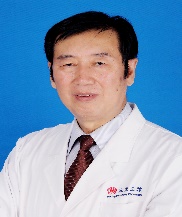
CUI /De-hua, Prof., (M.D, Ph.D.)
Dep. of Neurology, Peking University Third Hospital, AD group (Prof& Chief Scientist)
Deputy Director of Beijing Key Laboratory of MRI Equipment and Technology
Vice-Chairman of the Geriatric Cognitive Impairment Professional Committee of the Chinese Geriatric Society
Chairman of Publishing Committee of the APC Society for Vascular Cognitive Impairment
--------------------------------- --------------------------------- ------------------------------- -------------------------------
He has been researching in neurodegenerating diseases for more than twenty years in NCNP\BSI-RIKEN Japan. Now work in Peking University Third Hospital, the Key Laboratory of MRI Equipment and Technology Key Laboratory of Beijing. The main contribution is put forward for the PCAD, Published in Nature Medicine, PNAS, JCI, JNS and more than 200 academic papers, cited in Cell, Since, Nature, Lancet, PNAS, TRENDS in Pharmacological Sciences. He also to study on the extracellular space for the cognitive impairment in Prof. Han Lab.
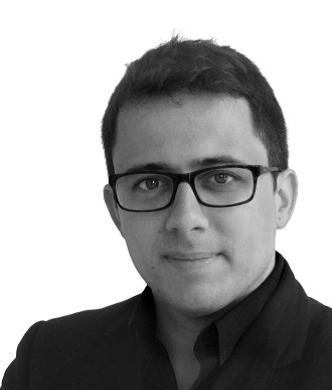
Moritz Helmstaedter
Prof. Dr. med., Dipl.-Phys.
*1978, Berlin, Germany
Max Planck Institute for Brain Research
Department of Connectomics
Max-von-Laue-Stra?e 4, D-60439 Frankfurt, Germany
(ph) +49 69 8500 33 3001
mh@brain.mpg.de | www.brain.mpg.de/helmstaedter
Education, Professional Experience
08/2014-present
Director at the Max Planck Institute for Brain Research, Frankfurt, Germany and Scientific Member of the Max Planck Society.
2011-2014
Group leader and Principal Investigator at the Max Planck Institute of Neurobiology, Munich, Germany.
2006-2011
Scientist (Postdoctoral fellow) at the Max Planck Institute for Medical Research, Heidelberg, Germany, Laboratory of Dr. Winfried Denk.
05-08/2006
Associate intern, McKinsey & Co., Stuttgart, Germany.
2001-2007
Doctoral thesis at the Max Planck Institute for Medical Research, Heidelberg, Germany, Laboratory of Dr. Bert Sakmann (summa cum laude, issued 01/2010).
1998-2007
Medical school, Ruprecht-Karls-University Heidelberg, Germany. Approbation (Medical license) 01/2008. Specialization during the practical year: Neurology.
1998-2006
Diplom (M.Sc.) in Physics, Ruprecht-Karls-University Heidelberg, Germany.
Scholarships, Awards, Offers
09/2016-present
Professor by special appointment (chair of neural networks), Radboud University, Nijmegen, Netherlands
2014
Professor of Neuroinformatics offer (succession Prof. Rodney Douglas), ETH Zurich (declined)
2013
Bernard Katz Lecture
2011
Lab head offer, HHMI-Janelia Farm Research Campus, Ashburn, Virginia (declined)
2011
PI offer, NINDS/NIH, Bethesda, Maryland (declined)
2009
Otto Hahn Medal awarded by the Max Planck Society
1998-2006
German National Academic Merit Foundation (Studienstiftung des Deutschen Volkes), full scholarship
Professional Activities
Managing Director, Max-Planck Institute for Brain Research (rotating tenure, 2017-2020)
Peer reviewer:
Boehringer-Ingelheim Foundation, Biophysical Journal, Cell, Cerebral Cortex, eLife, ERC, The Journal of Neuroscience, Molecular Psychiatry, Nature, Nature Biotechnology, Nature Communications, Nature Methods, Nature Neuroscience, Nature Reviews Neuroscience, Neuroinformatics, PLoS Computational Biology, PLoS One, Science, The Wellcome Trust.
Member of the board of reviewing editors, eLife (since 2017).
Selection committees:
Max Planck Director selection committees (6 since 2014), Max Planck Research Group Leader selection committees (4 since 2014); Chair of selection panel for Max-Planck-wide group leaders (since 2016), Lise-Meitner Groups Selection panel (2018); German National Academic Merit Foundation (2008-2014).
Advisory committees: Member of the Scientific Advisory Board of the Biomedical Big Data Center, CAS-MPG Partner Institute of Computational Biology, Chinese Academy of Science (since 2018), Member of
the Perspective Committee of the biomedical section of the Max Planck Society (since 2017), Ad-hoc advisor, FlyEM project, Janelia Farm Research Campus, HHMI (2016)
Memberships: The Society for Neuroscience (since 2002), Max Planck-Hebrew University Center (2015-2017).
Publications
Research Articles (key publications in bold)
Schmidt H, Gour A, Straehle J, Boergens KM, Brecht M, Helmstaedter M (2017) Axonal synapse sorting in medial entorhinal cortex. Nature 28;549(7673):469-475.
Boergens KM, Berning M, Bocklisch T, Br?unlein D, Drawitsch F, Frohnhofen J, Herold T, Otto P, Rzepka N, Werkmeister DW, Wiese G, Wissler H, Helmstaedter M (2017) webKnossos: Efficient Online 3D Data Annotation for Connectomics. Nature Methods 14(7): 691-694.
Staffler B, Berning M, Boergens KM, Gour A, van der Smagt P, Helmstaedter M (2017) SynEM, automated synapse detection for connectomics. eLife, doi: 10.755/elife.26414.
Berning M, Boergens KM, Helmstaedter M (2015) SegEM: Efficient Image Analysis for High-Resolution Connectomics. Neuron 87(6):1193-206 (Cover article).
Hua Y, Laserstein P, Helmstaedter M (2015) Large-volume en-bloc staining for electron microscopy-based connectomics. Nature Communications 6:7923.
Hoffmann JH, Meyer HS, Schmitt AC, Straehle J, Weitbrecht T, Sakmann B, Helmstaedter M (2015) Synaptic Conductance Estimates of the Connection Between Local Inhibitor Interneurons and Pyramidal Neurons in Layer 2/3 of a Cortical Column. Cerebral Cortex 25(11):4415-29.
Koelbl C, Helmstaedter M, Lübke J, Feldmeyer D (2013) A barrel related interneuron in layer 4 of rat. Somatosensory cortex with a high intrabarrel connectivity. Cerebral Cortex 25(3):713-25.
Helmstaedter M, Briggman KL, Turaga S, Jain V, Seung HS, Denk W (2013) Connectomic reconstruction of the inner plexiform layer in the mouse retina. Nature 500: 168-174.
Egger R, Narayanan RT, Helmstaedter M, de Kock CP, Oberlaender M (2012) 3D Reconstruction and Standardization of the Rat Vibrissal Cortex for Precise Registration of Single Neuron Morphology. PLoS Comput Biol 8(12):e1002837.
Andres B, Koethe U, Kroeger T, Helmstaedter M, Briggman KL, Denk W, Hamprecht FA (2012) 3D segmentation of SBFSEM images of neuropil by a graphical model over supervoxel boundaries. Medical Image Analysis 16:796-805.
Oberlaender M, de Kock CP, Bruno RM, Ramirez A, Meyer HS, Dercksen VJ, Helmstaedter M, Sakmann B (2012) Cell Type-Specific Three-Dimensional Structure of Thalamocortical Circuits in a Column of Rat Vibrissal Cortex. Cerebral Cortex 22(10):2375-91.
Meyer HS, Schwarz D, Wimmer VC, Schmitt AC, Kerr JN, Sakmann B, Helmstaedter M (2011) Inhibitory interneurons in a cortical column form hot zones of inhibition in layers 2 and 5A. Proceedings of the National Academy of Sciences (PNAS) 108:16807-16812.
Helmstaedter M, Briggman KL, Denk W (2011) High-accuracy neurite reconstruction for high-throughput neuroanatomy. Nature Neuroscience 14:1081-1088 featured in “High-throughput anatomy: Charting the brain's networks” Nature 490:293–298.
Briggman KL, Helmstaedter M, Denk W (2011) Wiring specificity in the direction-selectivity circuit of the mammalian retina. Nature 471:183-188.
Meyer HS, Wimmer VC, Hemberger M, Bruno RM, de Kock CP, Frick A, Sakmann B, Helmstaedter M (2010) Cell Type-Specific Thalamic Innervation in a Column of Rat Vibrissal Cortex. Cerebral Cortex 20:2287-2303 (Cover article).
Meyer HS, Wimmer VC, Oberlaender M, de Kock CP, Sakmann B, Helmstaedter M (2010) Number and Laminar Distribution of Neurons in a Thalamocortical Projection Column of Rat Vibrissal Cortex. Cerebral Cortex 20:2277-2286.
Turaga S, Murray J, Jain V, Roth F, Helmstaedter M, Briggman KL, Denk W, Seung HS (2010) Convolutional networks can learn to generate affinity graphs for image segmentation. Neural Computation 22:511-538.
Helmstaedter M, Sakmann B, Feldmeyer D (2009) L2/3 interneuron groups defined by multiparameter analysis of axonal projection, dendritic geometry, and electrical excitability. Cerebral Cortex 19:951-962.
Helmstaedter M, Sakmann B, Feldmeyer D (2009) The relation between dendritic geometry, electrical excitability, and axonal projections of L2/3 Interneurons in rat barrel cortex. Cerebral Cortex 19:938-950.
Helmstaedter M, Sakmann B, Feldmeyer D (2009) Neuronal correlates of local, lateral, and translaminar inhibition with reference to cortical columns. Cerebral Cortex 19:926-937. (Cover article).
Helmstaedter M, Staiger JF, Sakmann B, Feldmeyer D (2008) Efficient recruitment of layer 2/3 interneurons by layer 4 input in single columns of rat somatosensory cortex. Journal of Neuroscience 28:8273-8284.
Frick A, Feldmeyer D, Helmstaedter M, Sakmann B (2008) Monosynaptic connections between pairs of L5A pyramidal neurons in columns of juvenile rat somatosensory cortex. Cerebral Cortex 18:397-406.
Schaefer AT*, Helmstaedter M*, Schmitt AC, Bar-Yehuda D, Almog M, Ben-Porat H, Sakmann B, Korngreen A (2007) Dendritic voltage-gated K+ conductance gradient in pyramidal neurones of neocortical layer 5B from rats. Journal of Physiology 579:737-752. *equally contributing
Schaefer AT, Helmstaedter M, Sakmann B, Korngreen A (2003) Correction of conductance measurements in non-space-clamped structures: 1. Voltage-gated K+ channels. Biophysical Journal 84:3508-3528.
Reviews, Perspectives
Amit I, Baker D, Barker R, Berger B, Bertozzi C, Bhatia S, Biffi A, Demichelis F, Doudna J, Dowdy SF, Endy D, Helmstaedter M et al. (2016) Voices of biotech. Nature Biotechnology 34, 270-275.
Borst A, Helmstaedter M (2015) Common circuit design in fly and mammalian motion vision. Nature Neuroscience 18:1067-1076.
Helmstaedter M, (2015) The mutual inspirations of machine learning and neuroscience. Neuron 86(1):25-28.
Helmstaedter M (2013) Cellular-resolution connectomics: challenges of dense neural circuit reconstruction. Nature Methods 10:501-507 in Feature on Brain Mapping.
Denk W, Briggman KL, Helmstaedter M (2012) Structural neurobiology: missing link to a mechanistic understanding of neural computation. Nature Reviews Neuroscience 13:351-358.
Helmstaedter M, Mitra PP (2012) Computational methods and challenges for large-scale circuit mapping. Current Opinion in Neurobiology 22:162-169.
Kleinfeld D, Bharioke A, Blinder P, Bock DD, Briggman KL, Chklovskii DB, Denk W, Helmstaedter M, Kaufhold JP, Lee WC, Meyer HS, Micheva KD, Oberlaender M, Prohaska S, Reid RC, Smith SJ, Takemura S, Tsai PS, Sakmann B (2011) Large-scale automated histology in the pursuit of connectomes Journal of Neuroscience 31:16125-16138.
Helmstaedter M, Briggman KL, Denk W (2008) 3D structural imaging of the brain with photons and electrons. Current Opinion in Neurobiology 18:633-641.
Ascoli GA, Alonso-Nanclares L, Anderson SA, Barrionuevo G, Benavides-Piccione R, Burkhalter A, Buzsaki G, Cauli B, Defelipe J, Fairen A, Feldmeyer D, Fishell G, Fregnac Y, Freund TF, Gardner D, Gardner EP, Goldberg JH, Helmstaedter M, Hestrin S, Karube F, Kisvarday ZF, Lambolez B, Lewis DA, Marin O, Markram H, Munoz A, Packer A, Petersen CC, Rockland KS, Rossier J, Rudy B, Somogyi P, Staiger JF, Tamas G, Thomson AM, Toledo-Rodriguez M, Wang Y, West DC, Yuste R (2008) Petilla terminology: nomenclature of features of GABAergic interneurons of the cerebral cortex. Nature Reviews Neuroscience 9:557-568.
Helmstaedter M, de Kock CP, Feldmeyer D, Bruno RM, Sakmann B (2007) Reconstruction of an average cortical column in silico. Brain Research Reviews 55:193-203.
Book chapters
Boergens K, Berning M, Helmstaedter M (2016) Dendritic connectomics in: Dendrites (eds Stuart, Spruston, H?usser) 3rd ed. Oxford University Press, p. 623-638.
Helmstaedter M, Feldmeyer D (2010) Axons predict neuronal connectivity within and between cortical columns and serve as primary classifiers of interneurons in a cortical column. in: New aspects of axonal structure and function (Feldmeyer D, Lubke JHR, ed.). Springer New York, p. 141-155.
Patent
Seung HS, Murray JF, Jain V, Turaga SC, Helmstaedter M, Denk W. Method and apparatus for image processing. Published Patent Application No. 20100183217.
Invited presentations
2020 Plenary Speaker European Microscopy Congress | 2019 Gordon Research Conference, Maine, USA | Max Planck/HHMI Connectomics Conference (co-organizer), Berlin, Germany 2018 Dagstuhl Seminar, Wadern, Germany | Big Data in the Biosciences, Berlin, Germany | 2nd Sino-German Symposium Development and Maintenance of Brain Function: From Basic Mechanisms to Disease, Berlin, Germany | 2nd Peking University International Neuroimaging (PUIN), Beijing, China | Brain Conference Copenhagen, Denmark | Max Planck Symposium Frontiers in Bioscience, Buenos Aires, Argentina | Plenary Speaker INCF Congress on Neuroinformatics, Montreal, Canada | Peking University, Beijing, China | Japan Neuroscience Meeting 2018, Kobe, Japan | Keynote FENS Satellite Symposium Berlin, Germany | Connectomics Conference Janelia Farm, Ashburn, USA | Leopoldina and IAS Symposium From Synapses to Circuits in Health and Disease, Berlin, Germany 2017 DFN, Bonn, Germany | Karlsruhe Institute for Technology (KIT), Karlsruhe, Germany | Bernstein Conference 2017, Goettingen, Germany | Leopoldina Symposium, Halle, Germany | Physics Symposium Radboud University, Nijmegen, Netherlands | Brain Connectivity Workshop 2017, Zurich University and ETH Zurich, Switzerland | DIPP PhD Retreat of the Dresden International PhD Program, Berlin, Germany | 10th Student Symposium on Molecular Medicine, Ulm University, Germany | Max Planck/HHMI Connectomics Conference (co-organizer), Berlin, Germany | Gordon Research Conference on Dendrites, Lucca, Italy | Keystone Symposium on Connectomics, Santa Fe, USA | BCCN, Berlin, Germany 2016 Connectomics Workshop NIPS Barcelona, Spain | Leopoldina and Israel Academy of Sciences and Humanities Inter-Academy Symposium Jerusalem, Israel | Second Max Planck Symposium, Buenos Aires, Argentina | Physical Colloquium Halle University, Germany | CSH Asia Meeting, Shanghai, China | Keynote Annual Meeting of the German Anatomical Society, Goettingen, Germany | University Heidelberg, Germany | Symposium Frontiers in Network Science, Hamburg, Germany | rmn2 Frankfurt/Mainz, Germany | SCANDEM, Trondheim, Norway | Colloquium Max Planck Institute for Plasma Physics, Garching, Germany | Keynote Barrel Cortex Function Amsterdam 2016, Netherlands | Saarbruecken University, Germany | Connectomics conference Janelia Farm, Ashburn, USA | Research Data Alliance Europe, Amsterdam, Netherlands | Keynote Annual Meeting Clinical Neuroscience, Bern, Switzerland | Crick Centenary Symposium, Columbia and Rockefeller Universities, New York, USA | CAS Tandem Lecture: Quantitative Network Science, LMU Munich, Germany 2015 University of Helsinki, Finland | MPG-CAS ERTC Big Data, CAS, Shanghai, China | Chinese-German Meeting "Brain Development: Basic mechanisms and diseases", CAS, Beijing, China | 5th Neuroscience Symposium, Cambridge, UK | Keynote Talk Symposium "Cutting-edge Technologies in Life Science"; Martinsried, Germany | Psychiatry Colloquium, Ulm University, Germany | Oxford University Cortex Club, UK | Physics Colloquium, Duisburg University, Germany | Vollum Institute Portland, USA | Keynote Speaker Annual Winter Conference, Soelden, Austria | Keynote Talk Forschungszentrum Juelich, Germany | Annual Meeting German Physical Society, Berlin, Germany | Lecture at Pasteur Institute, Paris, France | Plenary lecture, Annual Meeting Swiss Society for Neuroscience, Fribourg, Switzerland 2014 BMFZ Heine University Düsseldorf, Germany | Brain Mind Institute, EPFL, Lausanne, Switzerland | Plenary lecture, Meeting of the Italian Physiological Society - Isle of Capri, Italy | Google Sci Foo 2014, Mountain View, USA | Harvard University, Boston, USA | HHMI/Max Planck connectomics conference (co-organizer), Berlin, Germany | Gordon Research Conference Synaptic Transmission, New Hampshire, USA | Microscience and Microscopy Congress, Manchester, UK | Jacques-Monod-Conference, Roscoff, France | CNCR Institute, VU University, Amsterdam, Netherlands | Workshop Physical, Engineering, and Biological Limits to Brain Measurements, Arlington, USA | Microscopy club, Laser Laboratory, Goettingen, Germany | Collaborations in Neuroscience Symposium, Max Planck Florida Institute for Neuroscience, Jupiter, USA | Max Planck Institute of Psychiatry, Munich, Germany | Annual Meeting Pro-Retina Foundation, Potsdam, Germany | Workshop Analyzing neural circuits and control theory, Cold Spring Harbor Laboratory, USA | Department of Diagnostic Radiology, University Freiburg, Germany | Institute seminar, Max Planck Florida Institute for Neuroscience, Jupiter, USA | Max Planck Meeting, Valparaiso, Chile 2013 MPI for Biological Cybernetics, Tuebingen, Germany | NERF Neurotechnology Symposium, Leuven, Belgium | Workshop Physical and Mathematical Principles of Brain Structure and Function, NSF, Arlington, USA | Workshop Visualization in Medicine and Life Sciences, Leipzig, Germany | Gatsby Unit, UCL, London, UK | Microscopy & Microanalysis Conference, Indianapolis, USA | Max Planck Institute for Brain Research, Frankfurt, Germany | caesar Conference, Bonn, Germany | Institut de la
vision, Paris, France | International Society for Magnetic Resonance in Medicine workshop, Split, Croatia | Biology and Medicine Section of the Max Planck Society Symposium, Berlin, Germany | Bernard Katz Lecture, Israel Society for Neuroscience, Eilat, Israel 2012 Bernstein Center for Computational Neuroscience, Berlin, Germany | école Supérieure de la Physique et Chimie, Paris, France | Visual Computing Workshop, German Informatics Society, Berlin, Germany | FENS Symposium (Symposium Co-chair and speaker), Barcelona, Spain | Conference Next Generation Medical Imaging Carnegie Mellon University, Pittsburgh, USA | Bernstein Conference, Bernstein Center Munich, Germany | European Microscopy Conference, Royal Microscopical Society, Manchester, UK | Workshop Scaling up connectomics, Janelia Farm Research Campus, HHMI, Ashburn, USA | Institute of Neuroinformatics, ETH Zurich, Switzerland | Allen Institute for Brain Science, Seattle, USA | Neural Information Processing Systems (NIPS) Meeting (Workshop co-organizer), Lake Tahoe, USA 2011 PANOS conference, Dortmund, Germany | Microscopy conference, Kiel, Germany | Connectomics conference, Janelia Farm Research Campus, HHMI, Ashburn, USA | NIMR, London, UK | MPG/Tokyo University meeting, Tokyo, Japan | MRC, Cambridge, UK 2010 Symposium Cortical Column in silico, Max Planck Florida Institute, Jupiter, USA | Conference Neuronal Circuits, Cold Spring Harbor Laboratory, USA | Conference The Neural Basis of Vibrissa-Based Tactile Sensation, Janelia Farm Research Campus, HHMI, Ashburn, USA | Berlin Colloquium on Scientific Visualization, Konrad Zuse Institute, Berlin | Monday Seminar of the Institute for Brain Research, University of Zürich, Switzerland | HHMI Janelia Farm Research Campus, Ashburn, USA | Center for Molecular and Behavioral Neuroscience, Rutgers University, New Jersey, USA | Princeton Neuroscience Institute, USA 2009 Berlin Circuit Conference HHMI/Max Planck Society, Germany | NINDS, National Institute of Health, Bethesda, USA 2008 Barrels Meeting, Johns Hopkins University, Baltimore, USA
Teaching
2018 Summer School Visual Neuroscience, Rauischholzhausen, Germany | Neuroscience Lecture Radboud University, Nijmegen, Netherlands 2017 Cajal School on Connectomics, Bordeaux, France | FENS-IBRO Cajal Course, Lisbon, Portugal 2016 Cajal Course in Computational Neuroscience 2016 (CCCN), Lisbon, Portugal | Donders Summer School on Neural Metrics, Nijmegen, Netherlands 2015 ACCN, Lisbon, Portugal | Donders Summer School on Neural Metrics, Nijmegen, Netherlands 2014 3rd Latin-American Summer School in Computational Neuroscience, Valparaiso, Chile 2013 INCF sponsored course, University of Antwerp, Belgium 2012 PhD course, University Goettingen, Germany | PhD course, Karolinska Institutet, Stockholm, Sweden | PhD course, International Max Planck Research School, Muenster, Germany | Barcelona Cognition, Brain and Technology Summer School, Barcelona, Spain | Neuroinformatics Course, Marine Biological Laboratory, Woods Hole, USA 2011 Neuroinformatics Course, Marine Biological Laboratory, Woods Hole, USA | PhD course Staromics, Université de Fribourg, Switzerland | PhD course, University of Copenhagen, Denmark | Workshop on Circuit & Molecular Architecture of the Vertebrate Brain, Cold Spring Harbor Laboratory, USA 2010 Workshop on Circuit & Molecular Architecture of the Vertebrate Brain, Cold Spring Harbor Laboratory, USA | Horizons in Molecular Biology, Max Planck Graduate School, Goettingen, Germany 2009 Graduate seminar Introduction to Connectomics, MIT and Harvard University, Cambridge, USA 2008-2012 General Human Physiology for the introductory practical courses for 1st and 2nd year medical students at Heidelberg University Medical School, Germany
Public media coverage / Public lectures
2018 ZVEI-Jahreskongress 2018, Berlin, Germany | Latest Thinking 2017 SWR2 Impuls – 1000 Antworten Link | Labjournal – Journal Club Link | Frankfurter Rundschau, Was unser Fühlen, Denken, Handeln bestimmt Link | ICNF Frankfurt am Main | 2016 Merton-Magazin, Masterplan für die Hirnvermessung Link | Schule MIT Wissenschaft, Erfurt | Salongespr?ch Schering-Stiftung & Komische Oper, Berlin | Connectomics debate Helmstaedter – Movshon, CNS New York 2016 Link 2015 Schule MIT Wissenschaft, Braunschweig | FIAS, Frankfurt am Main | Campus Talks, ARD Alpha, München Link | Lange Nacht der Naturwissenschaften MK Braunschweig | 2014
BioTechniques, Mapping Neural Connections
Link | Science, Investments Boost Neurotechnology Career Prospects | Science, Connectomics at the Cutting Edge (webinar together with Jeff Lichtman) Link | Gehirn und Geist, Der Netzwerk-Analysator Link | Die Welt, So wird die Hirnforschung zu einem gro?en Spiel Link | Frankfurter Allgemeine Zeitung, Kartograph des Gehirns | Frankfurter Rundschau, Die Vermessung des Gehirns - Einem Mysterium auf der Spur Link | BioTechniques, Mapping Neural Connections Link | Caesarium, Center of Advanced European Studies and Research, Bonn Link | Bild der Wissenschaft (print), Link | BRα, Brainflight – Forschung als Spiel, Link | Wissenschaft für Jedermann, Campus Martinsried, Munich | Science meets music public lecture, Max Planck Florida Institute for Neuroscience, Jupiter | Hebrew University/Max Planck Brain Forum: Frontiers in Brain Research, Berlin | Laborjournal, Hirnforschung @ Home, Link | 2013 Nature Methods, Neuroscience waves to the crowd, Link | Science, This is your brain: Mapping the connectome, Link | Stuttgarter Zeitung, Das kartierte Gehirn, Link | Deutschlandfunk, N?chstes Level Gro?hinrinde, Link | Wired, Zweites Leben: Die Digitalisierung des Gehirns | Science writers guild New York, panel discussion | Tech open air, Berlin | DasGehirn.info, Das Labyrinth im Gehirn, Link | Focus (print), Freiwillige Forscher | Rundfunk Berlin-Brandenburg, Radio interview | Economist blog, Crowdsourced connectomics: Mind games, Link | Focus online, Operation Brainflight: Mit dem Flugsimulator durchs M?usehirn, Link | DLD Conference, Munich, Game Based Brain Reconstruction, Link | 2012 DER SPIEGEL, Im Flug durch das Gehirn, Link | Nature, High-throughput anatomy: Charting the brain's networks, Link | 2011 TEDx Vienna, Brain Mapping, Link
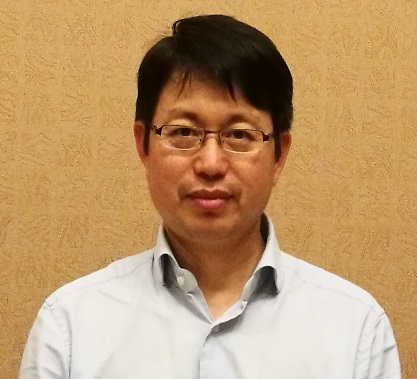
Associate professor and Program Coordinator of Biomedical Sciences
Institute of Chinese Medical Sciences, University of Macau
Email: huanxingsu@umac.mo
Dr. Su obtained his medical degree (MD) at Zhejiang University in 1994, MPhil degree at the Chinese University of Hong Kong in 2002, and PhD degree at the University of Hong Kong in 2008. Now he is working at University of Macau as an associate professor.
Dr. Su’s research mainly focuses on study of cerebrovascular diseases, especially cerebral small vessel disease. His group at Institute of Chinese Medical Sciences, University of Macau, are now working on finding natural products and non-invasive approaches to promote the glymphatic functions for the treatment of brain disorders. They have previously reported that omega-3 PUFAs promote extracellular Aβ clearance from the brain and resist Aβ injury through activating the glymphatic function, leading to cognitive improvement. They have also demonstrated that application of tPA via the glymphatic system significantly ameliorates the behavioral deficits and histological injury after subarachnoid hemorrhage. He has published over 100 peer-reviewed research articles in well-reputed journals in the discipline such as Nature Medicine, Nature Methods, Molecular Psychiatry, Nanoscale, FASEB J, Cell Death & Disease, and Molecular Neurobiology.

金坤林教授
金坤林 (Kunlin Jin) ,医学博士,美国北德克萨斯大学终身 教授。1991 年博士毕业于北京大学医学院;1992 年赴美,先后在美国加利福尼亚大学旧金山分校、 匹兹堡大学及 Buck 老年研究院从事神经干细胞、脑卒中及神经 保护机制等方面的研究。主持多项美国 NIH 基金的研究, 发 表 SCI 收 录 论 文 200余 篇 , 其 中 17 余 篇 发 表 在PNAS,论文还包括 Nature、JCI 等杂志;影响因子共达 800 多分; 前 55 篇 SCI 论文被引用总次数达 2万多次; 单篇引用最多 1447 多次。并担任美国 NIH 基金、国际联合癌症研究基金、中国国家科学技术进步奖等评委; 获专利 4 项;主编或参与编著 10 余部专著;主编著作包括《骨髓干细胞治疗中风(英文版)》、《神经干细胞和中枢神经系统疾病(英文版)》、《如何发表和撰写 SCI 期刊 论文》、《活到 100 岁月的秘密》、《干细胞临床应用:基础、伦理和原则》等。 担任 Nature,Aging, Aging cells等 40 类 SCI 期刊的特约审稿人。2010 年创办《老化与疾病》英文杂志 (www.aginganddisease.org),并任主编。2017 impact factor: 5.058。 2013 年创办国际老化与疾病协会 (www.isoad.org)。
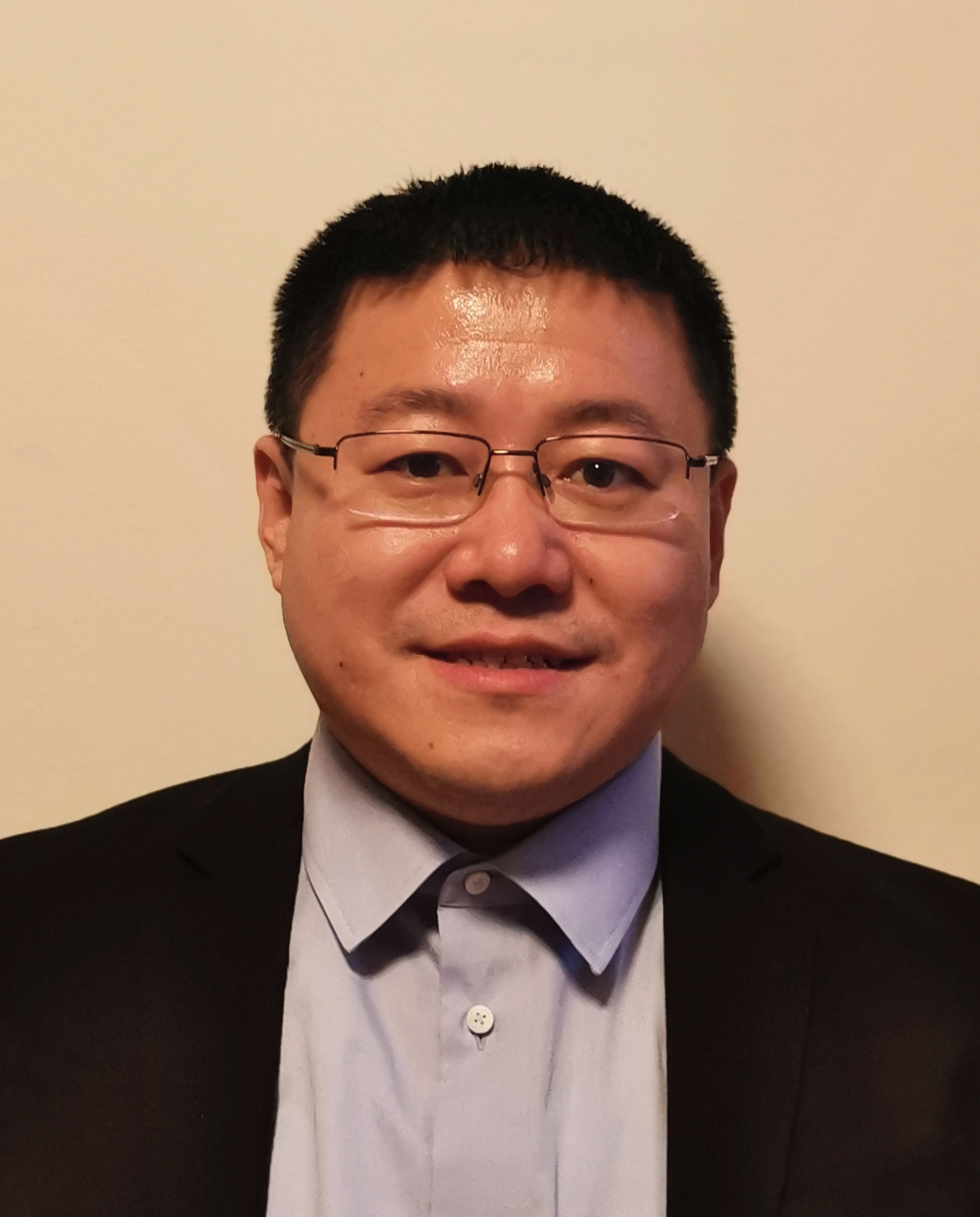
Priv. Doz. Dr. Kuangyu Shi is head of Lab for Artificial Intelligence and Translational Theranostics at Dept. Nuclear Medicine, University of Bern, Switzerland and senior scientist at Chair for Computer-aided Medical Procedure, Dept. Informatics, Technical University of Munich, Germany. He did his Master and PhD at Max-Planck Institute for Informatics (2003-2008), Germany. Then he moved to Dept. Nuclear Medicine, Technical University of Munich for postdoctoral research and worked as subgroup leader from 2012 to 2018. On May 2018 he completed habilitation at Dept. Informatics, Technical University of Munich and obtained faculty title (Priv. Doz.). His research focuses on developing artificial intelligence and computational modeling methods for medical imaging and interpreting the results to the underlying pathophysiology by designing corresponding in vivo and ex vivo experiments. He has received more than 2 million CHF of funding and has published 34 journal articles, 16 peer-reviewed computer science proceeding papers. He is currently in editorial board of Eur J Nucl Med Mol Imaging and J Med Artif Intell and served as reviewers of several medical and engineering journals, e.g. IEEE Trans Med Imaging, Med Image Anal, Meds Phys, Phys Med Biol, Theranostics, J Nucl Med. He received young investigator awards from SNMMI.
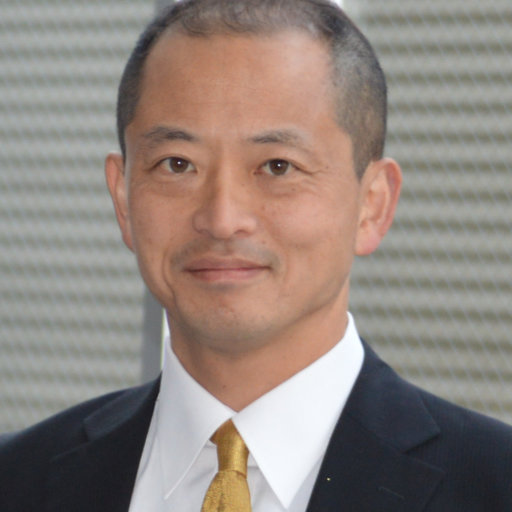 Yukio Ohsawa(大澤幸生)
Yukio Ohsawa(大澤幸生)
Professor, School of Engineering,
The University of Tokyo
Introduction: Yukio Ohsawa is a professor of Systems Innovation in the School of Engineering. He received BE, ME, and PhD in from the School of Engineering, The University of Tokyo (1995). Then worked for the School of Engineering Science in Osaka University (research associate,1995-1999), Graduate School of Business Sciences in University of Tsukuba (associate professor, 1999-2005), and moved back to The Univ. of Tokyo. He started researches from non-linear optics, and, via artificial intelligence, created a new domain chance discovery meaning to discover events of significant impact on decision making, since year 2000.
About chance discovery he gave keynote talks in conferences such as International Symposium on Knowledge and Systems Sciences, Int’l Conf. on Rough Sets and Fuzzy Sets, Joint Conf. on Information Sciences, Knowledge-Based Intelligent Information and Engineering Systems, etc. Chance discovery came to be embodied as innovators’ marketplace, a methodology for innovation borrowing principles of the dynamics of markets. Then he, when biking from his job in a business school, invented the basic idea of Data Jackets as a new tool for enhancing chance discoveries via combining data from various data owners. Since then, he is introducing the method presented in this book to sciences, educations, and businesses. His original concepts and technologies have been published as books and monographs from global publishers such as Springer Verlag, Taylor & Francis, etc. Two most important books among them are, “Chance Discovery” (2003) Springer, foreword given by Eric von Hippel), “Innovators” Marketplace: Using Games to Activate and Train Innovators” (2012) Springer, foreword given by Larry Leifer). He edited special issues as guest editors for journals, mainly relevant to chance discovery, such as Intelligent Decision Technologies (2016), Information Sciences (2009), New Generation Computing (2003), Journal of Contingencies and Crisis Management (2002), etc. As the program chair of Yukio Ohsawa, PhD, Professor Department of Systems Innovation School of Engineering, The University of Tokyo 113-8656 Tokyo, Japan.
Abstract: Here the speaker introduces Data Jackets as metadata, representing datasets reflecting peoples' potential interests. By visualizing the potential connectivities between DJs, participants in
the market of data think/talk about why/how they should/can combine the corresponding datasets. The owners of data may hesitate to open their data to the public, but they can present the DJs in the data marketplace. In this market, the participants communicate to create ideas to combine/use data and find future collaborators --- the marketplace can become a platform for innovations mediated by data. Also here an example is shown where indirectly useful data could be searched, which enabled an analogical invention of a method for data-based detection of explanatory precursors of earthquakes.
0
COUNTDOWN
